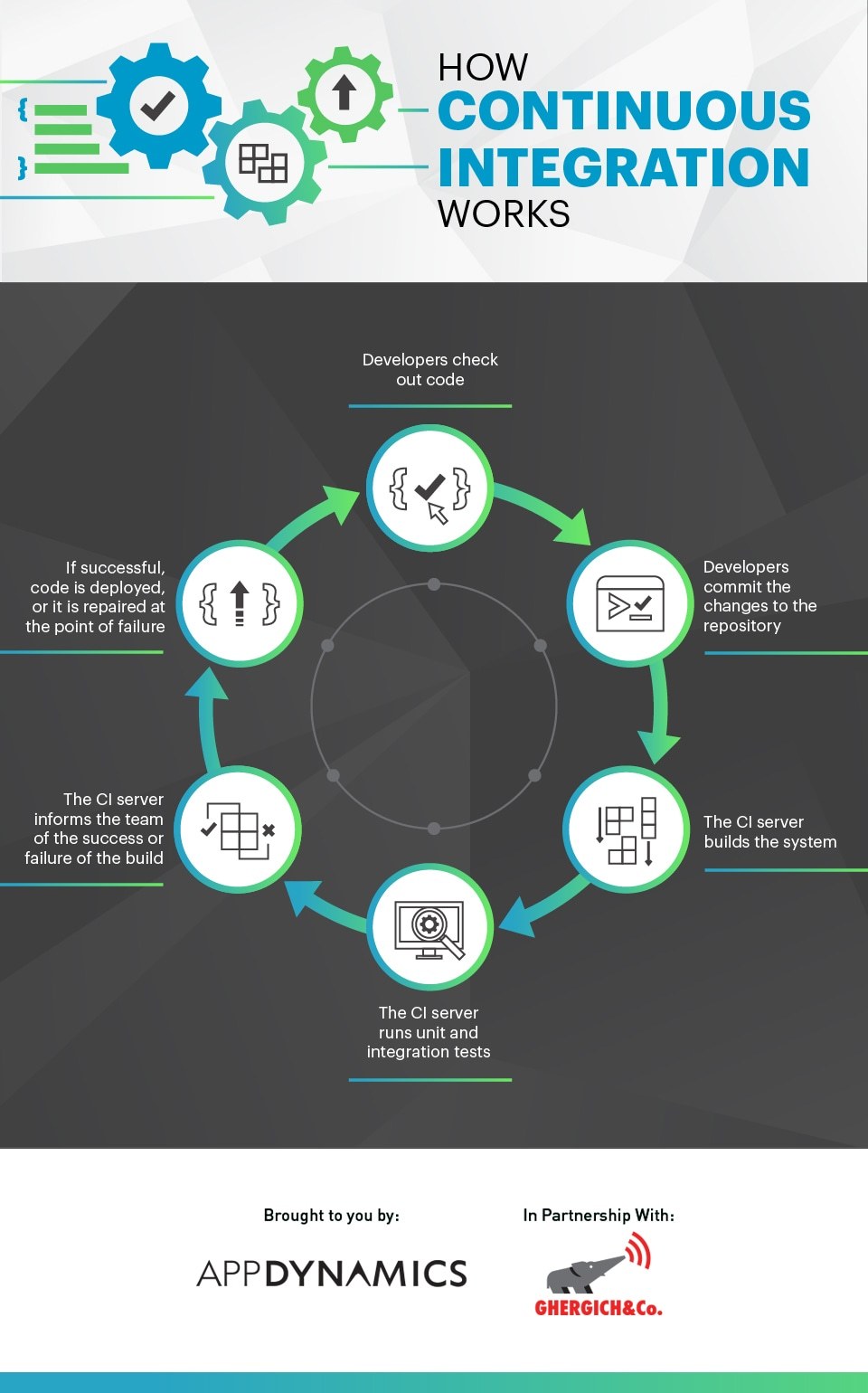There’s a lot of work that goes into the software and hardware that organizations depend on every day.
Think about all the lines of code, the programming, and the potential for mishaps. In fact, mistakes happen every day—code gets broken, updates happen, developers even make mistakes. Programming is a never-ending stream of to-dos.
In years past, these errors might have caused operations to come to a full stop. It
would have caused massive headaches and disruptions for users.
But there’s a new methodology at work that’s helping to change the nature of updates for programmers.
What is Continuous Integration?
Continuous Integration, or CI, allows for the automatic deployment and testing process of every iteration of an application.
This methodology constantly grabs changes to software as they happen, works them into the software, and points to any breaks or errors along the way.
CI helps programmers to work on code constantly, but also promotes teamwork and shared morale. That way, developers can focus on development, not deployment.
At PITSS, we use continuous integration to ensure quality for each release, decrease testing time, increase efficiency, and decrease cost of manual deployment labor. It’s one of our best methods of ensuring a quality product that’s on-time and on-budget.
Meet our team to see how we can transform the systems that matter most to your business.

